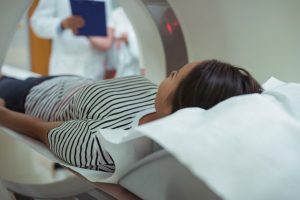Imaging tests are important for doctors to see what is going on literally under the skin of the patient. Different imaging modalities, or types, allow doctors to get a clear picture of the interior of the body or only a certain part of it. Mammography for example uses X-ray imaging tests to examine the patient’s breast tissue. If the doctor suspects a concussion, they’d recommend a different imaging test such as a CT scan.
Dr. Jose Pizarro is a radiologist from Longboat Key, Florida. Currently, Dr. Pizarro evaluates Diffusion Tensor Imaging and the effects of trauma on thousands of patients every year, including many NFL players. He explains that the different imaging tests fall under the following classifications.
X-Ray
One of the most common types of imaging tests, an X-ray uses electromagnetic energy beams to create an image of the internal organs, bone, and tissue. It is a painless test that doesn’t take a long time to perform. According to Dr. Jose Pizarro, the average X-ray test will take anything between 10 to 15 minutes. Usually, the doctor would recommend an X-ray to diagnose a bone injury or a tumor.
X-rays use ionizing radiation to produce those images. In general, there are different types of X-ray tests depending on the purpose or body part they create an image of.
-
An arthrogram is a type of X-ray test used to diagnose shoulder pain and bursitis. A contrast fluid is injected into the joint to see if it leaks. A leakage indicates a tear, blockage, or an opening in the area which might be the result of a disease.
-
A barium esophagram is a specific test that is performed on the esophagus to diagnose pharynx cancer. The patient drinks a liquid containing barium that coats the esophagus to allow the X-ray to get a clear image of any problems or tumors in that area.
-
A chest X-ray is used to assess broken ribs or monitor fluid in the lungs. Doctors usually rely on chest X-rays to determine the cause of various symptoms, including shortness of breath and chest pain.
CT Scan
A non-invasive diagnostic tool, computed tomography scan, or CT scan for short, gives a more detailed image of the internal organs of the patient. It’s a more complex form of X-ray that also uses computers to create an image of a vertical or horizontal cross-section of the body. “We often call them slices,” Jose Pizarro MD explains, “because we can examine and study these slices on a computer screen and get a more accurate view of the blood vessels, fat, bones, and tissues than a typical X-ray scan.”
CT scans have a great advantage since they expose the patient to less radiation than a regular X-ray test. Since the beam circles around the body, the resulting images or slices reveal different angles of the organ being scanned. Unlike X-rays, contrast fluids are not essential to perform this imaging test. Generally speaking, CT scans are used by radiologists to diagnose musculoskeletal disorders, cancer, trauma, infectious diseases, as well as cardiovascular diseases. The different types of CT scans include virtual colonoscopy, CT lung cancer screening, and single-photon emission computed tomography (SPECT) among others.
MRI
MRI is short for magnetic resonance imaging. It is both non-invasive and safer than X-ray-based tests, since it does not expose the patient to radiation. Instead, a magnet and a computer work together to create a detailed image using radio waves and magnetic fields. In MRI, each image depicts only a limited number of layers of the organ or body part, notes Jose Pizarro MD. However, the computer processes these images to create a detailed look inside the patient’s body. On average, the scan can take anything from 15 to 90 minutes depending on the type of the test.
Used to diagnose cancer tumors, the patient is often injected with gadolinium. Since cancer cells attract gadolinium particles like a magnet, this makes it easy for physicians and radiologists to determine the nature of the tumor. There are different types of MRI including functional MRI (fMRI), breast scans, magnetic resonance angiography (MRA), cardiac MRI, and magnetic resonance venography (MRV).
Ultrasound
An ultrasound is another type of imaging testing that doesn’t use radiation. As Jose Pizarro MD explains, the image of the organ is created through sound waves that a computer interprets. He explains that the way ultrasonography works is the same concept as the sonar for a submarine. Sound waves bounce off the organs, internal tissue, and bones and return to the image capturing computer.
While other imaging tests create an image or a cross-section slice of the body, ultrasound depicts the body organs in real-time as they function. This is vital in diagnosing such internal body parts as the abdomen, the heart, prostate, and breasts. Moreover, ultrasound also monitors the blood flow in the different blood vessels in the body. Ultrasound tests on pregnant women help the physician assess the progress and health condition of the fetus. The different types of ultrasonography include hysterosonography, obstetric ultrasound, abdominal ultrasound, breast ultrasound, carotid ultrasound imaging, and musculoskeletal ultrasound.
Jose Pizarro MD on PET Scans
This powerful scan combines radioactive drugs and a machine that scans the condition of the tissues and functionality of the organs for any abnormalities. According to Dr. Jose Pizarro, the radioactive drug, also called a tracer, can either be injected or taken orally by the patient. The PET scanner then receives the radiation signals and creates a more accurate image of the exact location of the infection or disease. PET scans are often used to diagnose cancer, epilepsy, coronary artery disease, Parkinson’s disease, seizures, cardiovascular conditions, and Alzheimer’s disease.
Radiologists rely on different imaging tests to get a good idea of the condition of the internal organs of the body. New advances in technology have made many of these tests non-invasive, faster, and safer.
This article does not necessarily reflect the opinions of the editors or management of EconoTimes











